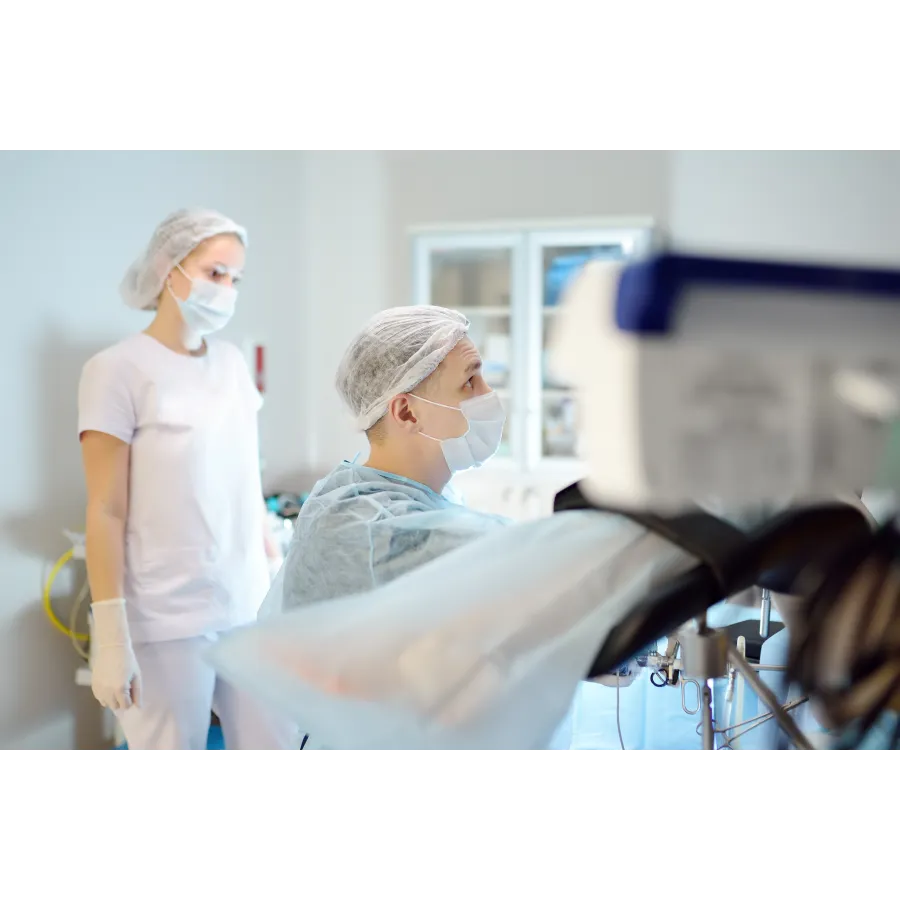Sacrocolpopexy
Sacrocolpopexy (sacral colpopexy) is a surgical technique which works to repair pelvic organ prolapse.
What You Need to Know
When the muscles around the pelvis weaken, the organs inside the pelvis can prolapse (slide out of place). This prolapse is sometimes accompanied by a bulge in the vagina. Pelvic organ or vaginal prolapse most commonly occurs after menopause, childbirth or a hysterectomy.
Sacrocolpopexy can be performed as an open abdominal surgery, or through the use of minimally invasive techniques. Sacrocolpopexy relieves bulging and pressure sensations in the pelvic area and may help with the cessation of urinary incontinence during strenuous activity.

Why You Might Need Sacrocolpopexy
And How Advanced Gynecology Can Help
There are many options available for the correction of vaginal prolapse. Abdominal sacrocolpopexy is the most widely preferred method to treat this condition. Sacral colpopexy can be done laparoscopically or robotically, a minimally invasive procedure that offers the same results as more invasive alternatives like vaginal repair.
Our board-certified team of women’s health experts are ready to help you with diagnostic care and a range of treatment options. We will counsel you about the best options for you and your health.

What are the Risks Associated with Sacrocolpopexy?
As with all surgical procedures there are some risks involved, including:
- Damage to a vein or artery possibly causing significant bleeding
- Perforation of the bladder or rectum
- May not improve or stop vaginal prolapse
- Difficulty with complete bladder evacuation
- Development of bulging in rectum (rectocele) or bladder (cystocele)
- Hip pain or numbness in legs
Call your doctor or receive immediate medical help if:
- You have a fever over 100F (37.8 C)
- You have heavy vaginal bleeding
- The catheter becomes stopped up and you stop passing urine.
Schedule Online
What to Expect Before and After Surgery
Your healthcare provider may ask you to make a few lifestyle changes prior to surgery. These may include the cessation of smoking. Smokers have more difficulty with the healing process and are more likely to experience breathing problems during surgery. If asked, you will need to quit at least 6 to 8 weeks (but at least 2 weeks) prior to surgery and to continue not smoking while in recovery.
Sacrocolpopexy can be an outpatient procedure where patients can go home the same day or just require an overnight stay. Full recovery typically takes around 8 weeks, during which time it is important to avoid all unnecessary activity such as lifting anything heavier than 10 pounds for the duration of your recovery. During the first 4 weeks of recovery, some patients experience light, sometimes bloody, vaginal drainage.
Recovery Recommendations
Recommendations for optimal recovery include:
- Taking stool softeners for the first 6 weeks
- Increased hygienic practices, including frequent showers or baths, to keep area clean and free of discharge
- Using pads instead of tampons during menstruation
- Avoiding sexual intercourse until 8 weeks post-procedure
